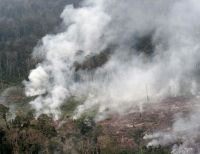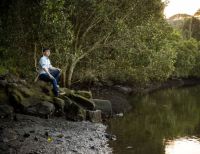
Nest of invasive Asian honeybees in Cairns, North Queensland. Photo: Dr Ros Gloag
For more than a decade, invasive Asian honeybees have defied evolutionary expectations and established a thriving population in North Queensland, much to the annoyance of the honey industry and biosecurity officials.
Research published today in Current Biology has shown the species, Apis cerana, has overcome what is known as a genetic bottleneck to grow from a single swarm into a population of more than 10,000 colonies over a 10,000 square kilometre area – which is about the size of Greater Sydney.
Co-lead author Dr Rosalyn Gloag from the University of Sydney School of Life and Environmental Sciences said: “Our study of this bee population shows that some species can quickly adjust to new environments despite starting with very low genetic diversity relative to their native-range populations.”
Dr Gloag said that high genetic diversity is generally assumed to be important for a population to quickly adapt to changing environmental conditions, such as when a species is translocated or experiences rapid environmental change caused by natural or climate change disasters.
“However, we have shown that this invasive population of honeybees has rapidly adapted since its arrival, despite having suffered a steep loss in genetic diversity,” she said.
The research team highlight the importance of this case study for understanding population resilience in general.
“This is even more important as we observe many species dealing with anthropogenic climate change,” Dr Gloag said.














